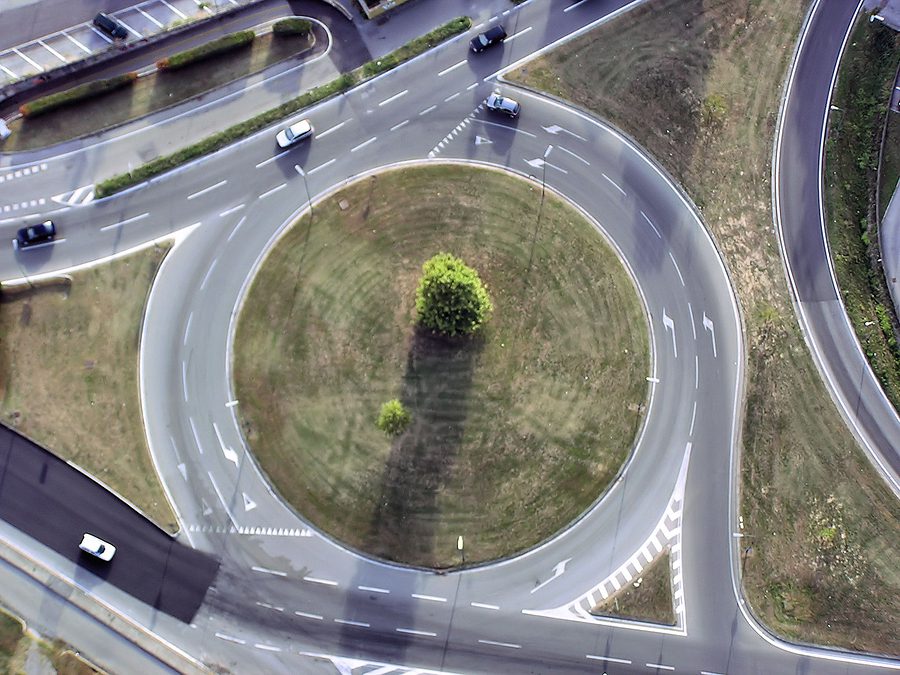
A Driver’s Guide to Traffic Circle Accidents
You are a safe driver. You are cautious and understand the rules of the road. You are traveling through a traffic circle when you are hit by another car who failed to yield. Now you’re dealing with the aftermath of a serious car accident. Repair bills, missed work, injuries, medical appointments, and medical bills are all piling up causing financial stress.
When you call the insurance company, you are offered a settlement that is much too low to compensate for all your expenses, and you haven’t even recovered yet. When you bring that up, they imply that you may share fault and you are lucky to be offered a settlement at all.
Now you’re even more stressed and worried that if you try to argue your side you could get nothing. Yes, things could be worse, but things shouldn’t have to be this way. This chaos isn’t your fault. Your frustration is valid, and you need someone on your side.
What Causes Traffic Circle Accidents?
Roundabouts, traffic circles, rotaries – whatever you call them, they aren’t there to annoy or confuse you. Traffic circles are gaining popularity because they help to manage traffic flow and reduce serious accidents. There are plenty of benefits to traffic circles. The curved entrances force drivers to reduce their speed and require them to yield right-of-way to vehicles that are already in the roundabout. With only one direction of traffic, there are fewer collision points, the need to focus your attention in primarily one area, and lower speeds require less stopping distance. When compared with four-way stops or traffic lights, traffic circles are safer for cars, motorcycles, cyclists, and pedestrians. Without the sharp angles of a traditional intersection, T-bone collisions are almost impossible.
However, until drivers begin to understand traffic circles better, they will actually cause a small increase in accidents, as some drivers will be confused about how and when to enter the circle. Usually, the accidents are because a driver fails to yield or is traveling at speeds that are too fast for a curved roadway. Sometimes it could be that a driver actually enters the traffic circle and turns the wrong way.

Who Has the Right of Way in a Traffic Circle?
The cars in the circle have the right of way. A driver approaches the circle, looks to the left for a gap in the traffic flow, and enters with a right turn. The driver keeps traveling in that direction until their exit, which will also be a right turn. If you miss your exit, you simply go around the circle again. The key factor here is that cars already in the circle have the right of way. If your car was already in the circle and another driver failed to yield and entered the circle causing your collision, you are not at fault.
How Can I Prove I Wasn’t at Fault?
The best way to prove you were not at fault is to document everything having to do with the accident as soon as you are able. You – or someone else on the scene – should make sure to take photos, get contact information from witnesses along with their statement, and get a police report. Typically, traffic circle accidents are fairly easy to determine fault. If you were in the circle and another driver failed to yield and hit you as they entered, they are at fault. Where things can get a little more gray is when speed or stopping while in the circle plays a role, but because of the layout, the responders to the scene should be able to put together what happened fairly easily.
The First Step to Take After a Traffic Circle Accident
While it may be tempting to prioritize gathering evidence, you need to prioritize your health. Seek medical attention right away and keep detailed records of your injuries and treatments from your medical facility. Make sure you follow through with all recommended treatment and follow up care. Not only is taking care of yourself a key part of your medical recovery, but if you wait to seek medical attention, the insurance company will try to argue that the injuries were either not serious or were unrelated to the accident.
Do I Need an Experienced Car Accident Attorney?
You can absolutely negotiate with the insurance company on your own. In fact, most insurance companies are hoping you will. Why? Because insurance companies are businesses that need to focus on their bottom line, and that includes getting you to settle for as little compensation as they can get away with.
Insurance companies will try many different tactics to try to get you to agree to their initial offer. When you have an attorney on your side, they will be able to look at the aftermath of the accident and calculate a fair settlement that addresses all of your losses and expenses, and then they will negotiate with the insurance company on your behalf.
While you may be concerned about the cost of an attorney, especially when you are already dealing with financial strain, a good car accident attorney will work on a contingency basis, meaning that they get paid a portion of your settlement once your case is over. There is no up-front cost. Because attorneys are so much more effective at dealing with the insurance company, you will likely end up with a far better settlement even after paying your attorney their percentage.
You have rights and deserve support in seeking justice. Help is available. Don’t wait until things go from bad to worse. If you’ve been injured in a traffic circle accident, be proactive about getting the settlement you deserve. Call Arthur Law Firm right away (419) 782-9881 for a free consultation. We will take the burden of negotiating with the insurance company off you, allow you to focus on your recovery, and make sure you get what you need to move forward.